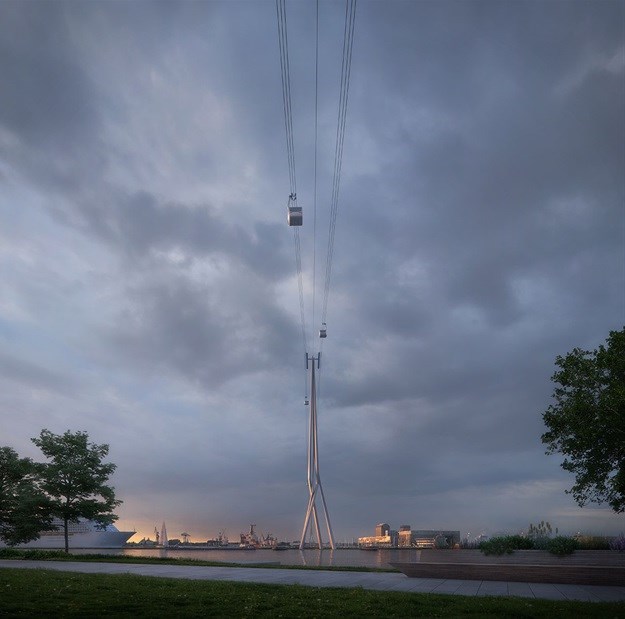
Top stories



Marketing & MediaStranger Things extends record run as all 5 seasons dominate Netflix Top 10
29 Dec 2025



Named IJbaan Cable Car, the new transport system will enhance Amsterdam's fast, green and future-proof public transport with sculptural towers and stations. The project, commissioned by the IJbaan Foundation, is a grassroots “Amsterdammer” citizens' initiative, supported by the Municipality of Amsterdam, and should be completed by the 750th anniversary of Amsterdam in 2025.
UNStudio's design scheme proposes three slender pylons and two stations: NDSM Marina on the North Bank and Minervahaven to the South. Designed as flexibly as possible, the project is aimed to expand the route to include a third station in the future, creating a connection to the Hemknoop, Sloterdijk Station or even Westergasfabriek and the Westerpark, depending on growth and needs.
It will take 4.6 minutes to complete a full journey on the cable car track at an average speed of 21.6km per hour. The passenger cabins have a capacity of 32 to 37 passengers, with additional bicycle cabins with space for four to six bikes.
"A cable car is an extremely sustainable public transport system. It is a very fast and green way of travelling, which is attractive for cyclists, commuters, students, residents and visitors. In Amsterdam, you see a growing need for connections across the IJ, with the new metro and bridges. The city is growing enormously and such an 'air bridge' contributes to the development of the entire region," said Ben van Berkeli, principal of UNStudio.
"Transport by air also relieves the increasing pressure on traffic and the existing transport network on the ground. It is not only efficient, but also fun. People are going to see and experience their city in a whole new way."
"To allow for large ships to pass along the IJ waterway, the towers vary in height, reaching 46m to 105m on either side of the water, and up to 136m in the middle. However, the towers are fully in line with the Dutch capital’s UNESCO World Heritage requirements. While enriching the Amsterdam skyline, the masts are not visible from the famous canal ring in Amsterdam’s city centre," said the studio.

The cable car’s three slender towers will allow the dense urban area of Amsterdam to expand, while being respectful of the city’s past. The form of the towers themselves directly reference Amsterdam’s robust industrial past of ports and ship cranes. Their sculptural form wading through the water strives to balance playfulness with elegance.
The cable car stations will not only serve as transport hubs for pedestrians, cyclists and public transport streams to come together, but also will act as a destionation in themselves. The Minervastation is intended as a new meeting place for the growing Western neighborhood, creating a vibrant urban plaza on the water with resaurant and bar facilities. The NDSM Marine station on the opposite bank provides a transport hub for the blossoming cultural hotspot in the North, with a bus stop, bicycle parking and viewpoint.
The cable car, as a form of transport, fits UNStudio's mission to develop architecture and urban design concepts that are future-proof, making the living environment healthier. The track also ties in with Amsterdam's ambition to be Europe's example for urban innovation, with a sustainable 'all electric' public transport system that is optimally linked to existing public transport modalities.

"It is expected that this fast and frequent connection between the West and North will not only have regular traffic, but will also have a positive effect on bicycle traffic as it connects existing networks on both sides of the IJ. The cable car provides an architecturally interesting addition to the city and the harbour view, contributing to the spread of tourism in the city," said Bas Dekker, founder of the IJbaan Foundation.
UNStudio is currently working on Gothenburg's Cable Car System, which will connect areas north of the river with the old city to the south. The studio also completed the Ellipsicoon Pavilion for the Revolution Precrafted pavilion series, the pavilion features continuous sculptural surface to create fluid contours.
Article originally published on World Architecture Community.

Since 2006, World Architecture Community provides a unique environment for architects, architecture students and academics around the globe to meet, share and compete.
Go to: https://worldarchitecture.org/